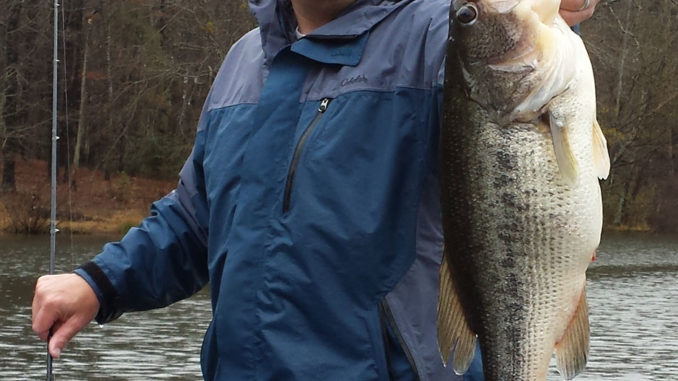
Bass are still biting; they need to be tempted
Many bass fishermen dread the time immediately after bass spawn, referred to as the “post-spawn period.” While there are challenges, there are several really good patterns that emerge.
One is topwater — the water is warm and fish are hungry and mostly still shallow. Topwater lures represent easy meals, an injured baitfish or other critter, depending on the lure. Use these lures in and around areas where bass were spawning, and you will pick up bass that are hungry and some that still may be guarding fry. Poppers and walkers are the mainstay, although prop baits can also be deadly. Topwater can also be used effectively during the shad spawn, which is usually just after the bass spawn. I’m talking about the shad in reservoirs — not the Hickory shad and American shad that run up our rivers in the spring from the ocean to spawn.
This leads me to possibly the best pattern — which is fishing a spinnerbait parallel to shorelines where the shad are spawning. This usually happens at night and lasts only a little while into the early morning. If it is cloudy or rainy, the spawn and bite can be extended a bit. So be ready early and get fishing right at first light. I prefer a 1/2-ounce Dave’s spinnerbait in shad colors with double-willow blades.
Make long casts on rocky or clay banks and reel fast, making the blades boil the top of the water. Strikes will be aggressive, and when you find bass feeding, you can catch several on consecutive casts. It is an awesome way to catch them. Often, banks where the channel swings up close is a good spot to try. Riprap banks around bridges can be good, too.
If the shad spawn is finished and topwater is not working, I’ve been in numerous big tournaments where a simple shakey head was deadly and one of the only ways to catch fish all day. Take a 1/8-ounce jighead and rig a green pumpkin or watermelon Culprit T-Rex straight-tail worm and fish slowly in the areas where fish have been feeding. Fish the corners of riprap and deep banks with 45-degree slopes. Try to get around rock and the type of banks where bass are resting after feeding heavily at night on the shad spawn. The little T-Rex worm is one of the only ways I know to present a bass a very easy meal and not have him work for it. There is something about the simplicity of it and the rate of fall that makes them bite. I generally switch to spinning tackle for this and use 10-pound Sunline Sniper Fluorocarbon line.
Later in the month, fish start to migrate to their summer spots: ledges, humps and other offshore structure. There will be no thermocline in May, so bass are free to go really deep. Often in North Carolina, the last week of May and first week of June are times when you can catch some big fish really deep. Those monster crankbaits that they use in Texas are awesome here for that time of year; my preference is a 6th Sense 500 DD. This bait hits 25 feet with ease, and it really does not pull real hard, considering how deep it goes. It has flat sides, which I feel are important down that deep to produce more flash and pull fish from further away to bite. I like shad colors and chartreuse colors and I rotate to see which they prefer.
If the water is a little dirty and fish are not quite so deep, try the 300 DD size — which is nice for that 15- to 20-foot range.
Big worms come into play as well when the fish go deep. Orange Culprit worms in 10- and 12-inch models are the mainstays. If you’re really looking for a big bite, the 9-inch Culprit Fat Max moves a lot of water and attracts larger fish. It is a great tournament bait if you are at a big-fish lake like Falls or Jordan.
If all else fails, run up the river of any of the lakes and look for current. My favorite bait to run fast up the river hitting little breaks and backflow is a Dave’s Swim Jig with a Culprit DW3 trailer. It’s something that Dave Wolak, who co-hosts the Know Fishing TV show with me, and it is just plain bad to the bone. It is a really fun and visual way to fish. Swim the jig close to any cover you see, especially emerging water willow. Some people call water-willow bank grass, but it is the grass that grows in about two or three feet of water and has leaves that look like a willow tree.
Don’t get discouraged with the post-spawn, while it is true it can be tough, it can also be one the most rewarding times of the year.



Be the first to comment